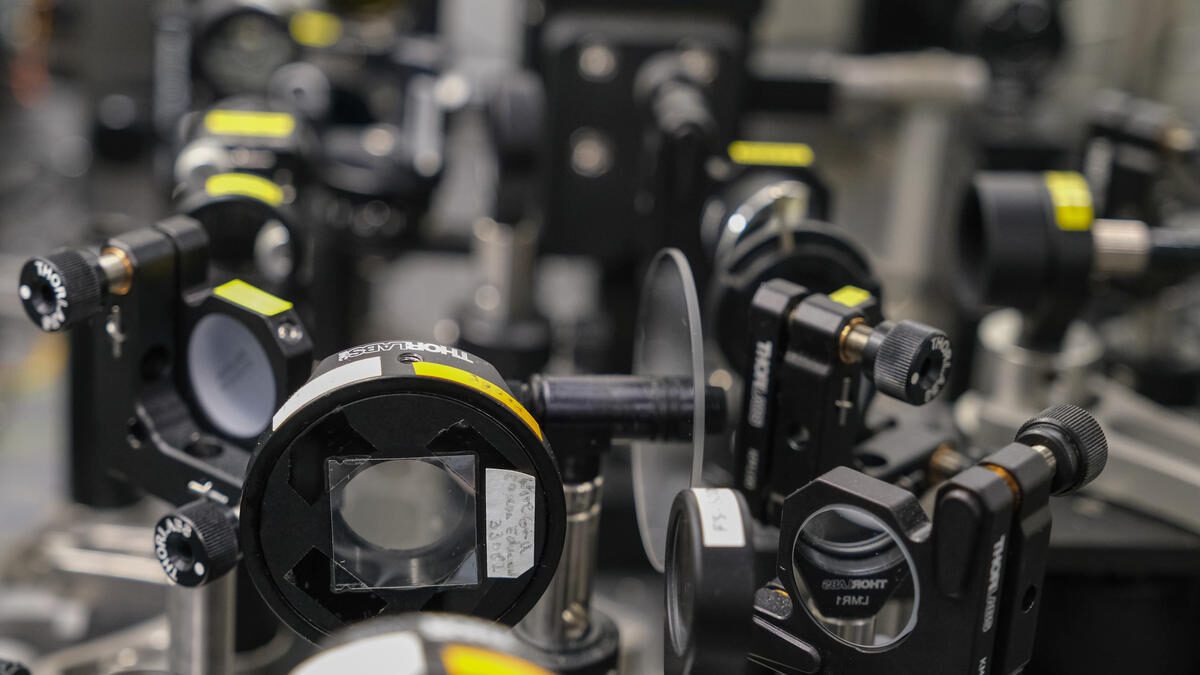
BioLEC-2 launches with new round of DOE funding
By Wendy Plump, Department of Chemistry
The Department of Energy has awarded another four years of funding to the Energy Frontier Research Center helmed by Princeton University’s Department of Chemistry: Bio-Inspired Light-Escalated Chemistry (BioLEC).
The $12.6M in funding was announced today by the DOE’s Office of Science, Basic Energy Sciences.
The award paves the way for BioLEC-2, the next iteration of the EFRC-funded Center established by Director and Principal Investigator Gregory Scholes in 2018 to supercharge photoredox catalysis research for scalable applications in chemical manufacturing.
The award is part of $540M in DOE funding for ERFC-based research projects at 54 universities and 11 national labs that target solutions to the climate crisis and advances in clean energy technologies, low-carbon manufacturing, and other national priorities.
Inspired by photosynthesis, BioLEC uses schemes of investigation that combine light harvesting and advances in solar photochemistry to enable otherwise inaccessible photo-induced cross-coupling reactions.
A diverse team of national researchers from synthetic chemistry, biophysics, physical chemistry, and engineering comprise the Center. Several are based at Princeton Chemistry, including Paul Chirik, the Edwards S. Sanford Professor of Chemistry; Rob Knowles, professor of chemistry; and David MacMillan, the James S. McDonnell Distinguished University Professor.
Partner institutions include the National Renewable Energy Laboratory, MIT, Cornell, and the Brookhaven National Laboratory, among others. Together, researchers have published a number of high-profile papers that seek to expand our understanding of how photocatalysis works in a variety of systems and reactions.

“I’m thrilled,” said Scholes, the William S. Tod Professor of Chemistry. “I am proud because this renewal evidences the impact and success of what we have done, which reflects scientific advances impossible if any of us were working as a single P.I.
“This is the point of the EFRCs, and it is a very important and impactful strategy of the DOE.”
Garry Rumbles is a research fellow at the National Renewable Energy Laboratory, and a BioLEC partner.
“The renewal and creation of BioLEC-2 is a testament and a reward of our efforts in making BioLEC-1 a success,” said Rumbles. “We overcame the challenge of merging traditionally disparate subdivisions of chemistry, whilst combining the efforts of national labs and academia to achieve this goal. We created a true center with BioLEC-1 and we plan to make an even larger impact with BioLEC-2.”
BioLEC-2 will address three main thrusts put forward by the DOE during the proposal-submission stage, with the following goals:
• develop novel tools to discover and control mechanisms for macromolecular transformations;
• “hijack” the sophisticated nanomachinery of nature to enable photodriven transformations by designing microenvironments in photoactive proteins, or “photoenzymes,” to introduce functionality that first mimics and then exceeds that of natural systems;
• build on the fundamental knowledge of the elementary organometallic steps available through visible light excitation with the goal of gaining a more global understanding of how changes to substrate, ligand, and photocatalyst identity affect the reaction mechanism.
Read the full press release here: https://www.energy.gov/articles/doe-announces-540-million-technologies-transform-energy-production-and-cut-emissions
The DOE established the EFRC program in 2009 as a means of bringing together and funding creative, multidisciplinary teams to spur advances in energy technologies. These centers take advantage of powerful new tools for characterizing, understanding, modeling, and manipulating matter from atomic to macroscopic length scales, and train the next-generation scientific workforce by attracting talented students and postdoctoral researchers interested in energy science. There are currently over 40 active EFRCs across the country.